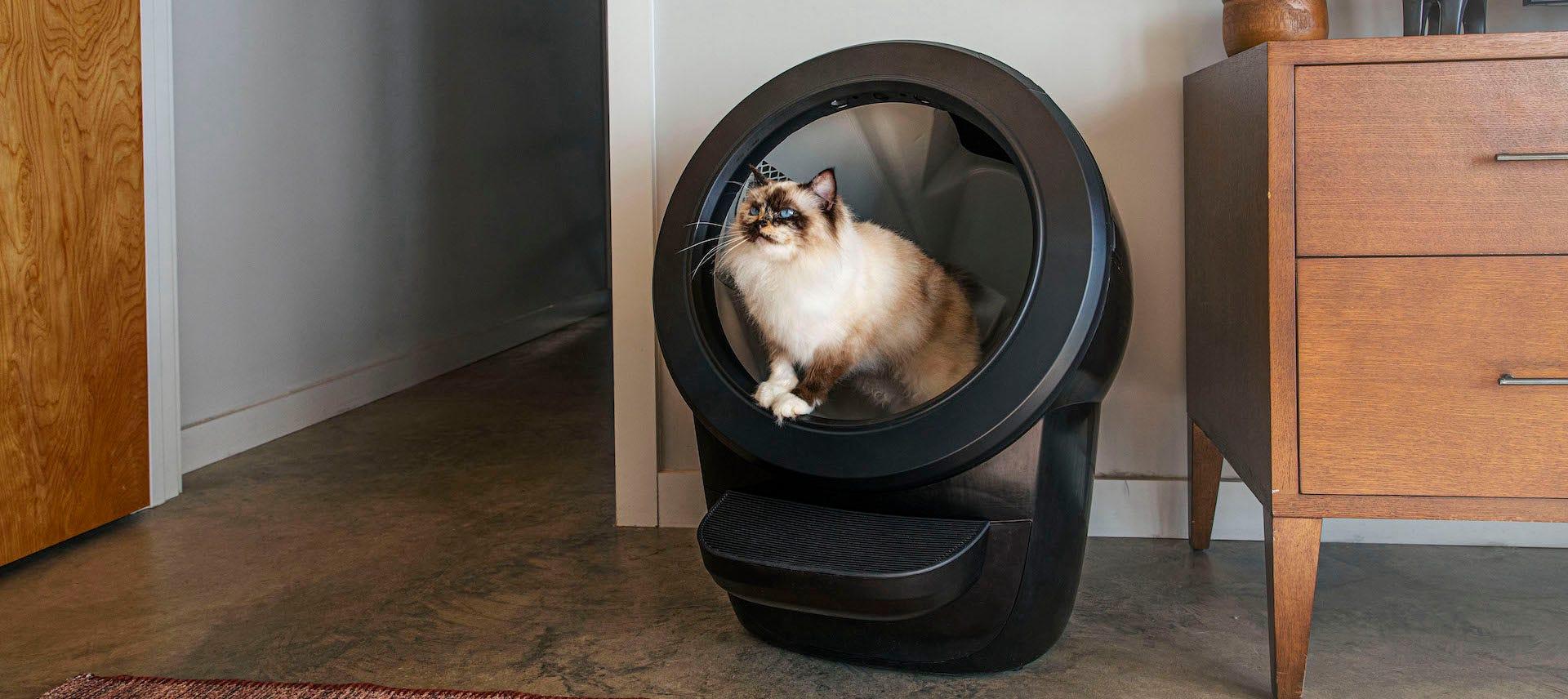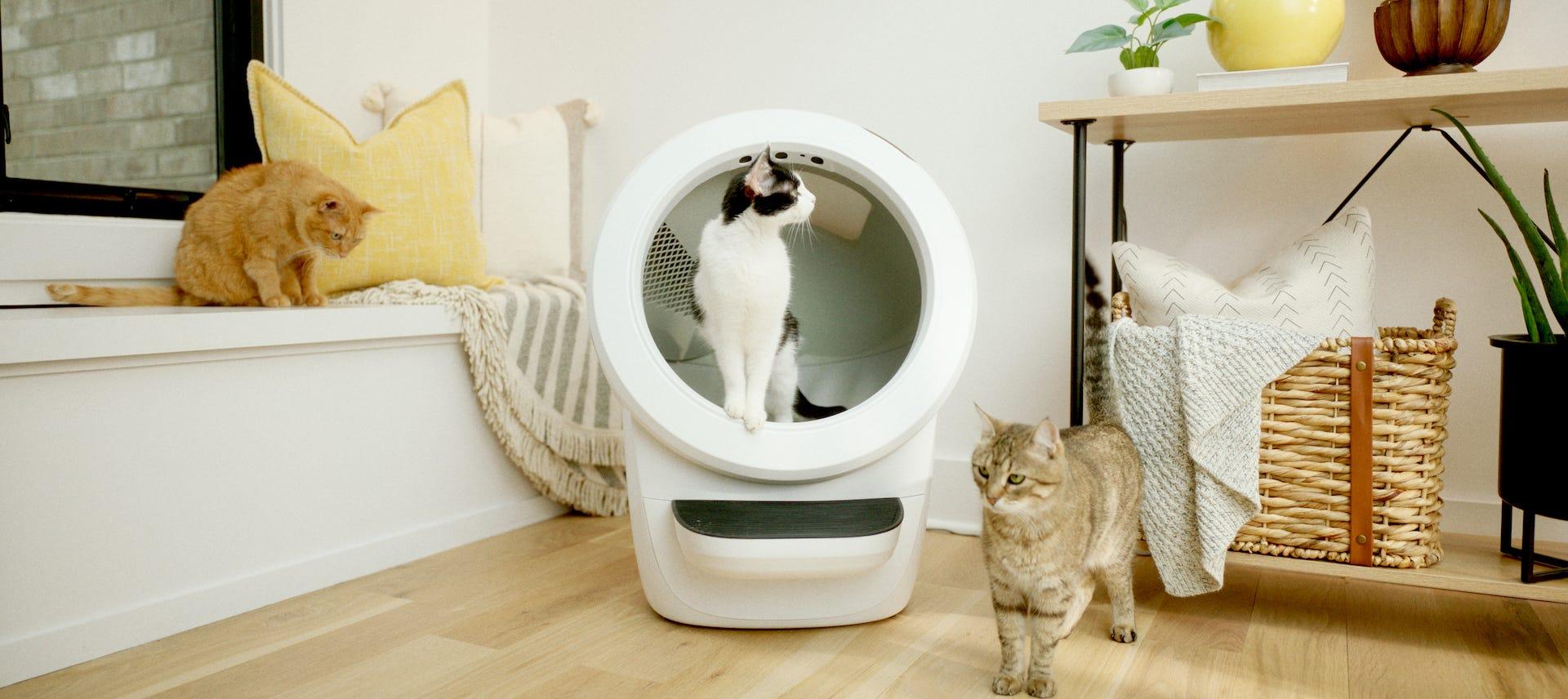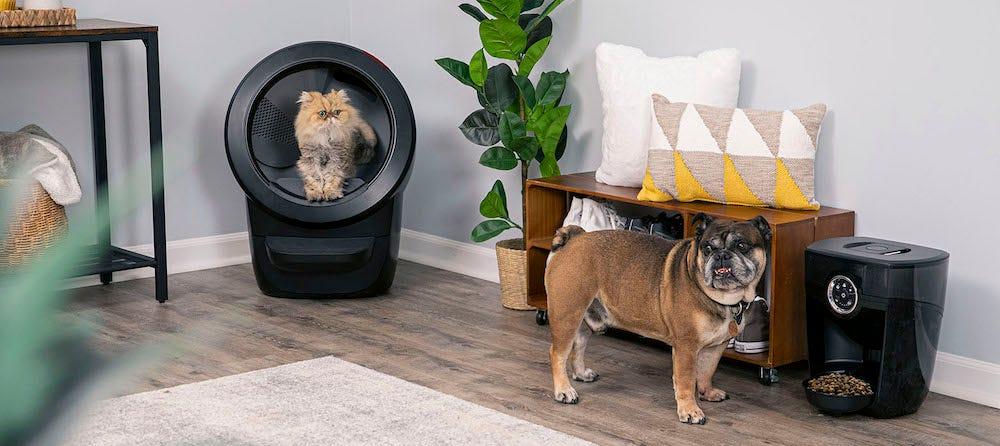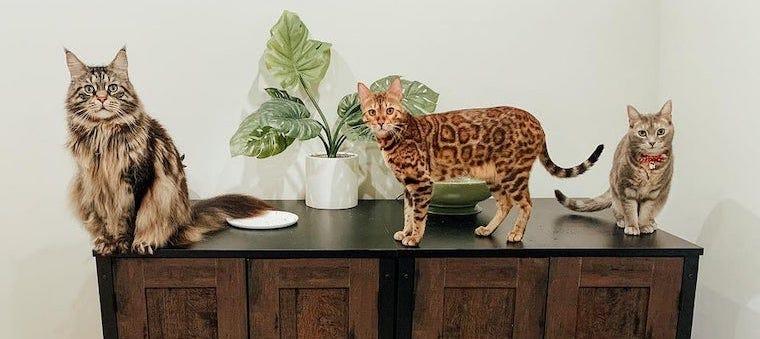If you live in a small house or tiny apartment, it can be hard enough to find space for your own things, let alone the cat's litter box. However, we can’t stress enough how important it is that you get this cat-parenting step right: litter box issues are a top behavioral concern reported to vets and cause of people giving up their cats.
The goal is to make your limited space work for both of you, which means that the litter box should be out of the way, but easy to access. While it may seem inherently disadvantageous to have a litter box in a smaller space, that’s not necessarily the case; the smaller the space, the more often you will see (and smell) the litter box, so the more likely you are to keep it clean—a win for both of you. So let’s discuss the best ways to creatively arrange your space—and your litter box—in a small home or apartment.
Step 1: Before deciding where to put the litter box, figure out how many you need.
How many litter boxes do you need?
As a general rule, you should have one litter box per cat, plus one extra. According to Dr. Justine Lee, that rule of thumb is “have n+1 traditional litter boxes per cat”. If you have one cat, you may be able to get away with one litter box in a small house or apartment if you clean it frequently; otherwise, you should have a second one. That extra litter box ensures your cat has an alternative place to go if he finds the first one unattractive (unclean) or unavailable (door got closed, guests are over, etc.).
If you have multiple cats in a small home, finding space for an appropriate number of litter boxes can get difficult. You may opt for fewer litter boxes, but then you must make sure to scoop once in the morning and once in the evening.
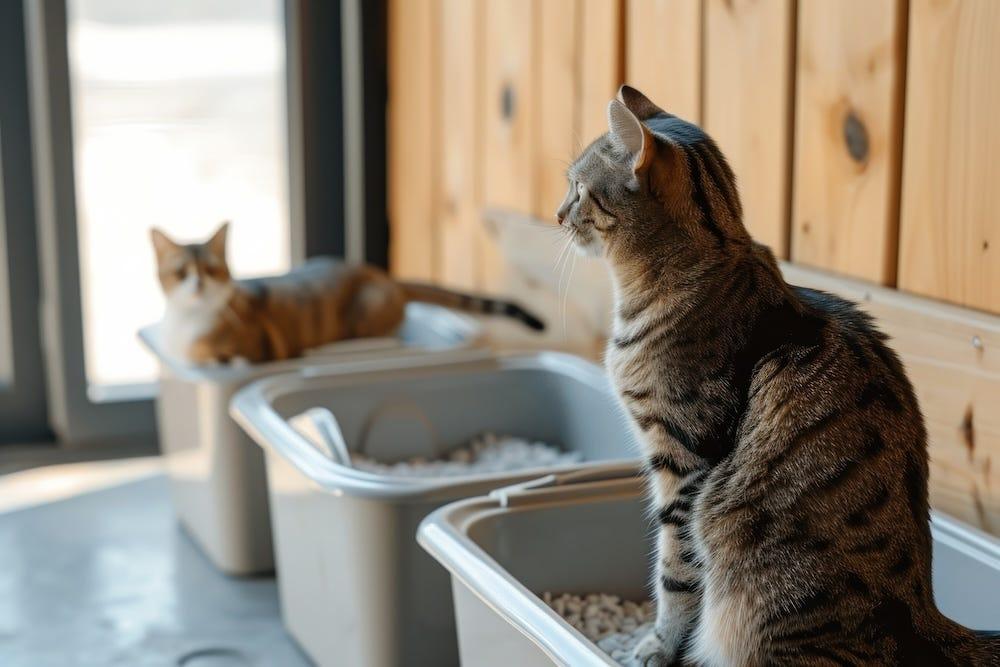
If cleaning several litter boxes twice a day seems like a tall order, you might want to invest in a self-cleaning litter box. Automatic litter boxes like Litter-Robot 4 clean up right after the cat uses it, so you don't have to spend time scooping, and each cat has a clean place to go every time. Litter-Robot has the same footprint as a traditional large litter pan, so it’ll fit easily in your small house or apartment.
Now that you know how many litter boxes you have to accommodate, where should you put them?
A convenient location for both you and your cat
At the end of the day, you really just have to put yourself in your cat’s shoes; when placing your cat’s litter box, think of the best and most convenient place you’d want your bathroom!
- Accessible. You probably want the bathroom to be located somewhere convenient—there's nothing worse than having to walk a long distance when you have to go!
- Private. In addition, the bathroom should be somewhere private, away from other people (something we humans typically accomplish with a door).
- Clean. Finally, you probably want the bathroom and the toilet to be clean and free of… remnants of previous users…
You get the idea! These same qualities are what your cat looks for in their litter box.
The best places for a litter box
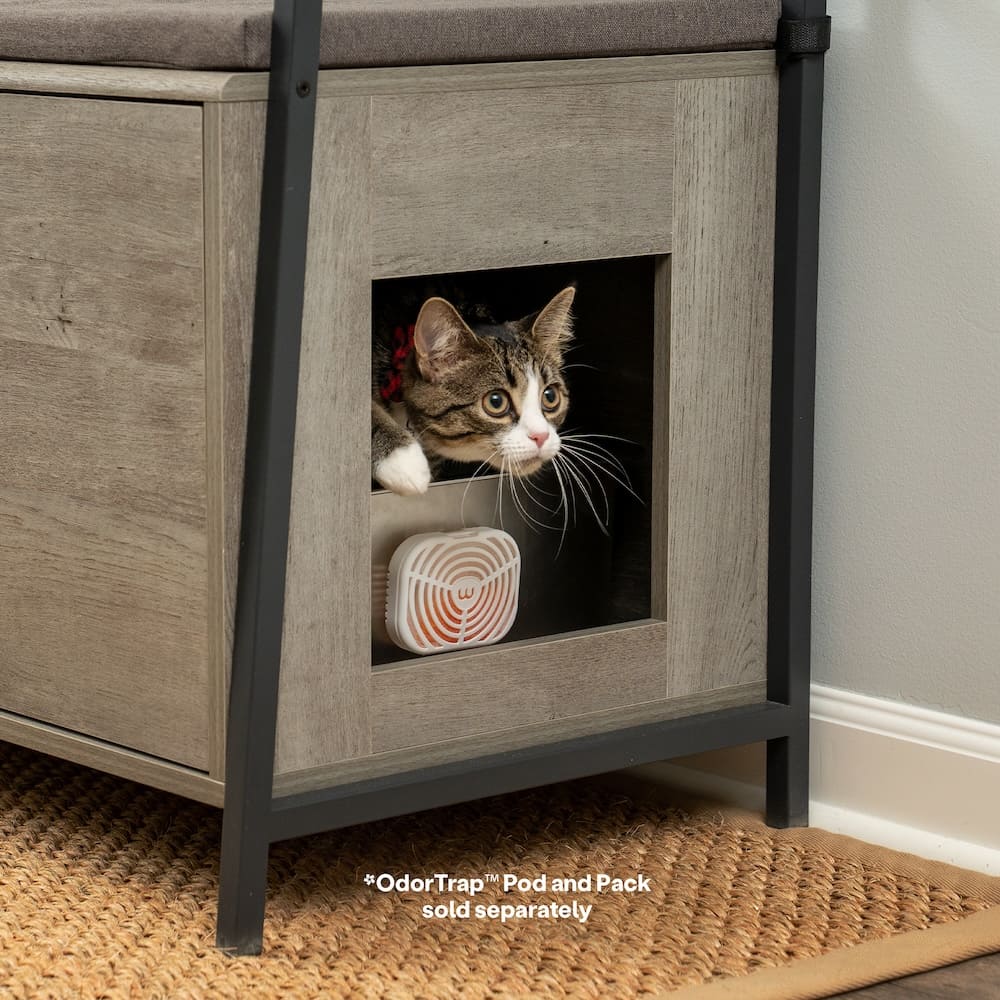
Again, the best place for the litter box is somewhere out of the way, but easy to access—for both of you. Your cat has to be able to get to the litter box when it's time to go and you have to be able to clean it easily. While that may sound obvious, some people's efforts to conceal the litter box with hidden litter box furniture or place it out of sight only create more hassle. Here's what else to look for in an ideal location:
Locate the litter box somewhere private or provide privacy with an enclosure, curtain, or cover.
- In the bathroom. A great place to locate the litter box is your own bathroom, as long as you make sure to keep the door wide open when it's not in use. Many people tuck the litter box next to the toilet, between the toilet and tub, or, if you have a small space, under the sink.
- Guest bedrooms. They are also a choice spot for the litter box since they may not get as much foot traffic.
- In a hallway closet. You may not have an extra room in a studio apartment or small home. If not, look for an entryway or hallway closet that can accommodate a litter box and offer privacy. Make sure to prop open the doorway (or cut a hole in the door if you own the place), so your cat has consistent access.
- In a laundry or mud room. These are also common places people put the litter box. However, they may not be ideal; washers and dryers are noisy as they tumble clothes and sound buzzers, and mud rooms are prone to high traffic. If you have a skittish cat and must place the litter box in these spaces, consider placing it inside another piece of furniture to help your cat feel secure.
Avoid placing the litter box in areas with high traffic, loud or abrupt noises, or where dogs can easily nose around. The litter box should be placed somewhere quiet with low traffic so your cat feels secure and never feels like they have to go elsewhere for relief. In small spaces, finding an always-calm spot may be challenging, so think beyond obvious spaces.
Placement tips for small spaces
If you're wondering where to put the litter box in a small apartment, consider reconfiguring or repurposing furniture that already occupies your space to accommodate the litter box. Sideboards and side tables can be retrofitted to house the litter box and supplies. From the front you can't tell it's been modified, but from the side, you can see a kitty-sized entryway. There are many DIY options, or you can buy pre-made multi-tasking items, like a planter that houses the litter box.
Consider placing the litter box inside hidden cat litter box furniture. You can find many ways to conceal the litter box, some of which may work for your space. For example, litter box furniture is designed to conceal your cat’s litter box in a piece of furniture, while blending in with other home decor and style.
Monitor and adjust based on your cat’s feedback
Once you find your ideal place for the litter box in your small house or tiny apartment, pay attention to your cat's behavior. Make sure your cat can get in and out of the litter box easily and that access isn't accidentally interrupted by laundry, shoes, grocery bags, or guests unknowingly closing doors.
If the location is working out, great! Otherwise, you may need to move the litter box to a more reliable location. If that is the case, it's best to gradually move the litter box toward the new location instead of abruptly disappearing it. Or, temporarily, you may want to introduce a litter box in a new location and let waste accumulate in the litter box in the old location to make it less attractive. Cats prefer a clean place to go and the new, clean litter box will become her new top choice.
Where should you NOT put a litter box?
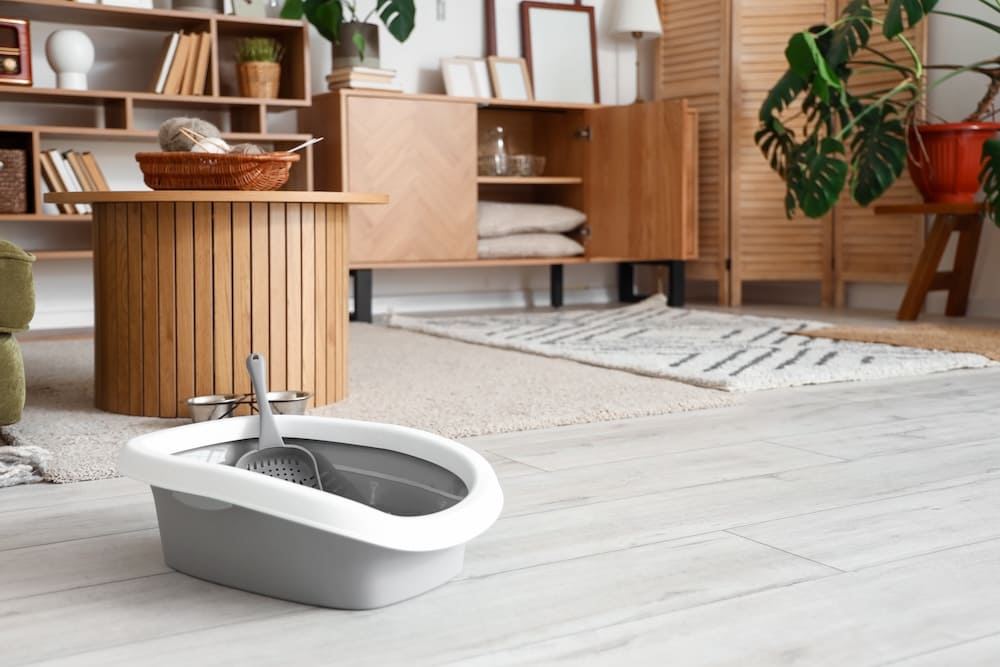
- Next to heat-emitting or loud appliances: avoid placing the litter box next to clamorous appliances such as laundry machines or furnaces. The warmth emanating from the appliances could amplify the smells coming from the litter box itself, deterring your cat. Furthermore, the cacophony of sound could cause your cat to be apprehensive of using that location at all.
- Next to your cat's food and/or water station: it’s best to distance your litter box from where your cat eats, ensuring that their feeding and eliminating zones do not overlap.
- In your bedroom or living room: unless you have a self-cleaning litter box like Litter-Robot that also locks in odors, traditional litter boxes can quickly become an eyesore when waste accumulates and come with unwanted smells. In addition, cats prefer low-traffic areas so their business stays more private.
